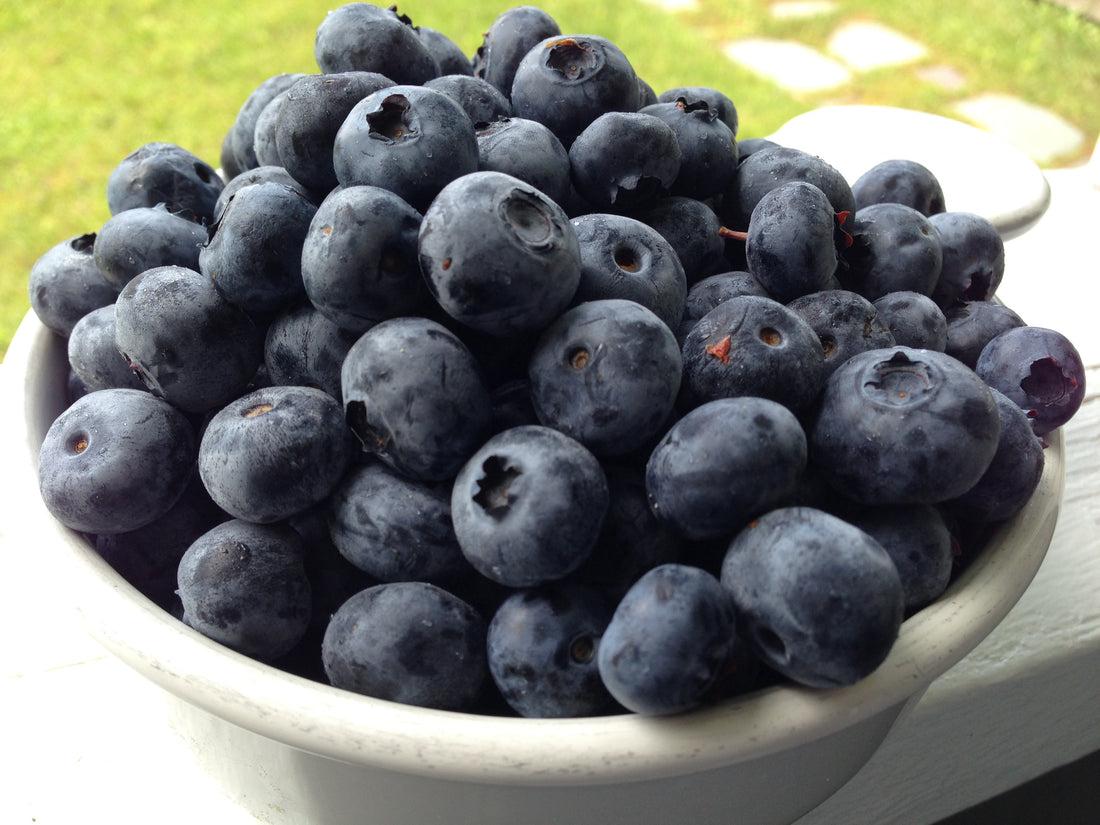The blueberry is a deciduous, perennial shrub which is native to North America, and grows to about 4 metres. Blueberries need cold winters to produce fruit. An easterly or north-easterly position with plenty of sunshine is best. The soil should be well drained and quite acidic, in the range of pH 4.5 to 5.5, with a high content of organic matter. If the pH is too high then sulphur may be added, or ammonium sulphate used to gradually acidify the soil. Blueberries have shallow, fibrous roots and need an open and porous soil which is constantly moist. Whilst they need ample water, they cannot tolerate poor drainage, so raised beds may be necessary if drainage is poor. Organic matter such as compost, animal manure and mulches are recommended.
Mix approximately 20g of slow release fertiliser into the soil when planting and apply the same amount again 2 to 3 months after planting. Space plants about 1.5 metres apart and water in well to remove any air pockets in the soil. Due to their shallow roots they need ample moisture and protection from drying out, so mulch with chopped lucerne, pea straw or a similar product. The shallow root system also means that competition from weeds has a serious effect on plants, so ensure weeds are controlled by using mulch and/or weed mat. Frequent irrigation is necessary during the growing season, but avoid overhead watering of berries near maturity as this can cause splitting of fruit and allow botrytis (fungal disease) to develop. Whilst blueberries are generally self fertile, fruit set may be improved by cross pollination.
Blueberries are borne on the previous year’s growth and the best berries are formed on vigorous wood. Prune young plants to remove weak shoots and thin out flowers, as excess fruit production in the first 3 years may weaken the plant. Keep the centre of the bush open to air and light. Each sucker will bear from the tip in the first year, then from the laterals in the next year or two, finally becoming unproductive. Remove these older suckers by cutting to the ground, or back to selected side shoots. This will encourage new fruiting wood.
Yellowing older leaves may indicate magnesium deficiency. Try the addition of magnesium sulphate (epsom salts). Yellowing younger leaves may mean iron deficiency. Try the addition of iron chelates. Fertilise each year in Autumn with a mulch of approximately 4cm of well rotted manure.
Early Varieties
- Denise – large berries with good flavour. Pick quickly as they become floury if left.
- Needs to be pruned heavily to maintain vigour and fruit quality.
- Bluecrop – medium sized berries with good flavour. Prune heavily.
Mid season Varieties
- Bluerose – large berries which are tart until fully ripe. Leave a week after development of full colour. Prune heavily.
- Northland – small to medium berries of excellent flavour. Vigorous plant.
Late season Varieties
- Brigitta – large, sweet berries – pale in colour.
- Dixie – large delicious berries but too fragile for commercial use.
Ann Costelloe

